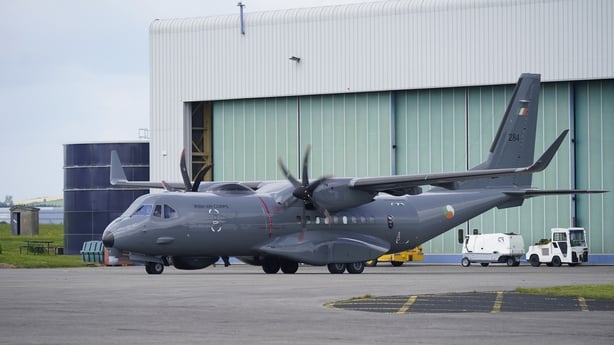The Irish Defence Forces dispatched a specialist observation plane twice in recent days to an area of the Atlantic south of Cork where Russian naval vessels, including one equipped with new hypersonic missiles, are understood to have been traversing.
Irish Naval Service assets are also understood to have been involved in the monitoring operation.
Flight tracking systems show a C295 Irish Air Corps plane flew over an area south of Ireland on both Monday and Tuesday.
On Sunday, three Russian vessels, led by the warship Admiral Golovko, passed through the English Channel, headed for the Atlantic.
The Russian vessels were moving in convoy having left their base in Severomorsk, Russia, on 2 November. The Admiral Golovko is one of Russia's most modern warships and carries Zircon missiles which travel at multiple times the speed of sound.
The other two Russian vessels were a refuelling tanker and a research ship, the Yantar, which carries a crew of 60.
The Yantar is considered a Russian intelligence vessel and has been observed in recent years by western militaries loitering near undersea cable routes.
We need your consent to load this flourish contentWe use flourish to manage extra content that can set cookies on your device and collect data about your activity. Please review their details and accept them to load the content.Manage Preferences
Reports from the Centre of Strategic and International Studies, a US foreign policy think tank, have described the Yantar as being equipped with submersibles capable of cutting or tapping into undersea cables.
At the time of the departure from their base, the Russian Defence Ministry said the "main task of the mission" was to "display the flag and ensure naval presence in operationally important areas of the off-shore maritime zone."
It is understood that as the vessels passed through the English channel, headed to the Atlantic, they were monitored as part of a joint operation by British, French, and US planes and vessels, as well as Irish military planes and naval vessels as they moved south of Ireland.
Timeline of operation
Just after 3am on Sunday, while south of Cornwall, the Yantar turned off its transponder, meaning it was no longer visible on non-military vessel tracking systems.
While the Russian vessels’ transponders were turned off for a period, it is understood they did not enter the Irish exclusive economic zone (EEZ) - the maritime area over which Ireland has rights to resources - before going into the Atlantic.
At 1.08pm on Monday, the Irish Defence Forces C295 plane left the Casement military aerodrome at Baldonnell, west of Dublin. It arrived in an area about 250 kilometres south of the Cork coast at 2.20pm.
The plane was not detected by flight tracking systems for a period of just over an hour, before reappearing and later returning to base.
Yesterday it flew a similar route.
The area surveilled by the C295 contains nine underwater cables that carry telecommunications data between the United States, Africa and Europe.

The C295 is one of a pair of Defence Forces’ planes used to carry out covert and overt missions along with search and rescue.
It is equipped with sensors and communications devices and can track boats and ships at a distance, including with computer systems that can observe details as small as car registration plates from an altitude of 15,000 feet.
Asked about the movements of the C295, the Defence Forces said the Irish Naval Service and Air Corps "conduct 24/7 monitoring of vessels within the Irish EEZ. This surveillance allows for timely detection and response to any potential maritime situations."
"The Defence Forces remain dedicated to protecting Ireland's maritime interests and ensuring the security of our waters and infrastructure through vigilant and ongoing surveillance operations. Any specific vessel movements or interactions are assessed within this broader context of routine maritime monitoring and international law compliance."

